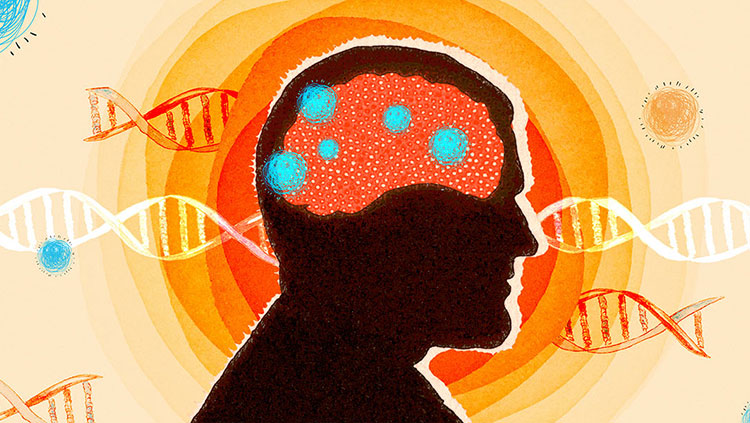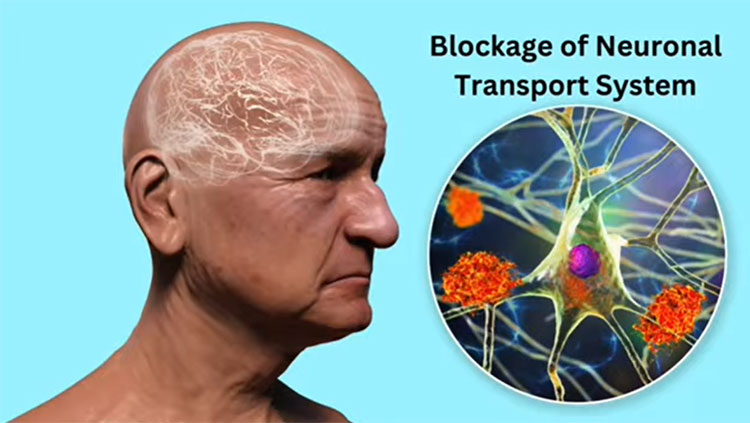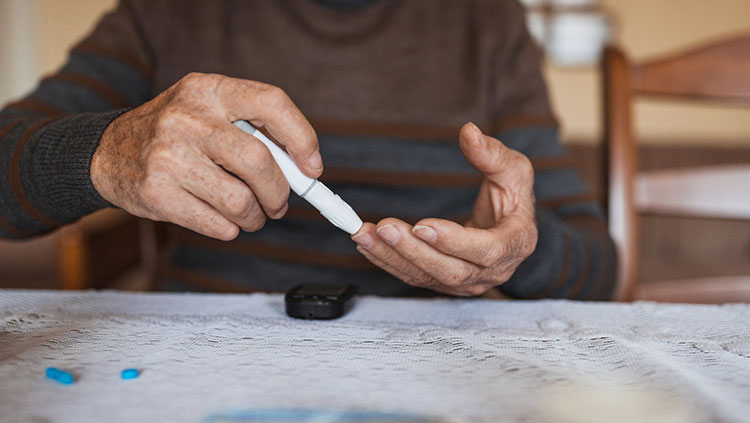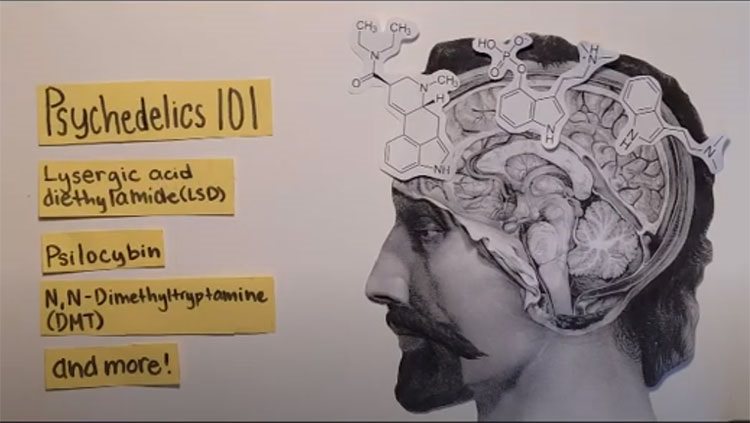How Addressing Sex, Genetics Can Improve Outcomes for Alzheimer’s Patients
- Published19 Nov 2025
- Author Bella Isaacs-Thomas
- Source BrainFacts/SfN

Menopause marks a significant physical transition for women in midlife. Brain changes during this time may pave the way for symptom onset later in life for women with a higher genetic risk for Alzheimer’s, and taking a holistic approach to treating conditions that intersect with the disease could keep patients healthier longer. University of Arizona neuroscientist Roberta Diaz Brinton presented these preliminary findings Nov. 16 in San Diego at Neuroscience 2025, the Society for Neuroscience’s annual meeting.
Two-thirds of people living with Alzheimer’s in the United States today are women. A constellation of reasons — some biological, some sociocultural — likely underpin this elevated risk, said Rebecca Edelmayer, vice president of scientific engagement at the Alzheimer's Association. But no two patients develop this disease for the same reasons.
Although some risk factors, like genetics or age, are fixed, others are malleable. This means everyone can take meaningful steps to bolster their brain health. Parsing how both risk types — modifiable and unmodifiable — affect how this disease plays out in patients helps researchers develop new diagnostic tools for dementias including Alzheimer’s, Edelmayer said. “We’ll be able to treat [patients] more effectively, and we'll be able to also really think about sustainable strategies for risk reduction and prevention,” she added.
How Genes Carry Risk
Women are around twice as likely to develop Alzheimer’s compared to men. One root cause of this increased risk lies not in their on-average longer life spans, Brinton said, but in menopause — a universal experience for all women who reach older age.
Brain changes associated with the disease begin decades before patients exhibit noticeable symptoms. “You subtract 20 years from the average age of diagnosis — [age] 72 — and what you end up running into is the average age of menopause,” she noted.
Women who carry APOE4 — a variant of the APOE gene that considerably increases one’s risk of developing Alzheimer’s — tend to experience menopause earlier. To examine how this transition affects the female brain, Brinton’s team engineered mice to mirror the brains of people with this elevated risk.
Typically, the brain uses glucose as its primary source of fuel. But among carriers of this gene, the brain switches to rely on lipids available in the white matter to power itself. This shift ultimately triggers an immune response as the body reacts to these now-fragmented pieces of white matter as if they’re foreign threats, Brinton explained. Ultimately, these changes drive neuroinflammation and pave the way for symptom onset decades later.
University of California neuropsychologist Kaitlin Casaletto, who was not involved in the research, said these preliminary findings fit “nicely” with emerging research on APOE genes in humans. “I think there's a story emerging here that APOE influences inflammatory pathways, lipid dysregulation, and mitochondrial stress in humans,” she added.
Around a quarter of the population carries one or more copies of APOE4, Casaletto pointed out. Although having it doesn’t necessarily guarantee a person will develop Alzheimer’s, those who know they carry it — and anyone else who wants to reduce their risk — can take proactive steps toward prevention.
Addressing Health Holistically
Researchers studying Alzheimer’s and doctors treating it historically looked at the disease as solely a matter of the brain. But there’s been growing recognition in recent years of the fact that brain health is bidirectionally linked to virtually every other organ, said Sharyn Rossi, senior director of neuroscience programs at the BrightFocus Foundation and moderator of the Neuroscience 2025 panel. “The brain is an interconnected system that’s influenced by the rest of the body, and each of these systems represents an area of prevention and intervention,” Rossi said.
For now, the only therapeutics approved to slow the loss of cognitive function associated with Alzheimer’s address amyloid-beta, one of the proteins that builds up in the brains of people with the disease. But Brinton’s team wondered: What if patients are treated for health issues unfolding in other organs that intersect with Alzheimer’s?
First, they looked at data involving people with Alzheimer’s who also had comorbidities, including type-2 diabetes, high cholesterol, inflammation, and high blood pressure. The team found people who received treatment for those comorbidities had better cognitive function compared to those who were not treated, Brinton said.
Brinton and her colleagues concluded that this combination of interventions could slow the rate of cognitive decline by 40% to 60% — a more robust slowing compared to existing anti-amyloid therapies, she explained.
In a mouse model, they administered drugs aimed at the same systems responsible for changes in the brain during menopause: the immune system and the glucose-metabolic system. Those therapies brought glucose, triglycerides, and cholesterol levels back into the normal range, Brinton said. Also, the mice with the APOE4 gene had less amyloid-beta in their blood, indicating they were more efficiently clearing the protein from their brain.
Understanding the unique ways Alzheimer’s disease develops in women is a crucial step toward keeping female patients healthy. The effort has broader implications, too. As the American population continues to age, Rossi highlighted the nation’s healthcare infrastructure and economy are unprepared for the looming care needs of a growing number of patients.
Women make up more than three-quarters of the unpaid labor force, disproportionately taking on the crucial yet uncompensated work of providing care for other people, Casaletto noted. When they develop Alzheimer’s, their declining health affects not just their loved ones, but society more broadly. “When women are well, our economy does well, our families do well, [and] our communities do well,” Casaletto said. “So, we need to wrap our head around understanding some of the female-specific factors that are driving these diseases.”
CONTENT PROVIDED BY
BrainFacts/SfN
References
Bantugan, M., Shang, Y., Wang, T., Torrandell, G., Van Rossum, H., Brinton, R. D. (2025). Altered mitochondrial function and inflammation in humanized APP/APOE mouse model of Alzheimer’s Disease risk. [Poster Abstract]. University of Arizona, Tucson, AZ. Society for Neuroscience Annual Meeting, San Diego, CA, United States. Program No. PSTR437.06. https://www.abstractsonline.com/pp8/#!/21171/presentation/35224
Parker, A. K., Torrandell, G., Van Rossum, H., Brinton, R. D. (2025). Impact of combination therapies on Alzheimer's Disease-related outcomes in a humanized APP/APOE AD-risk model during midlife. [Poster Abstract]. University of Arizona, Tucson, AZ. Society for Neuroscience Annual Meeting, San Diego, CA, United States. Program No. PSTR437.12. https://www.abstractsonline.com/pp8/#!/21171/presentation/35230
What to Read Next
Also In Alzheimer's & Dementia
Trending
Popular articles on BrainFacts.org


.jpg)
















